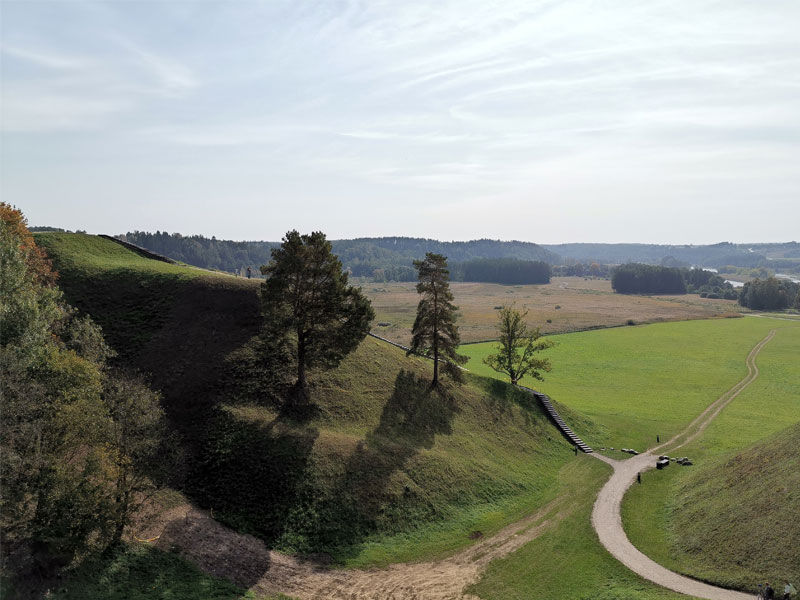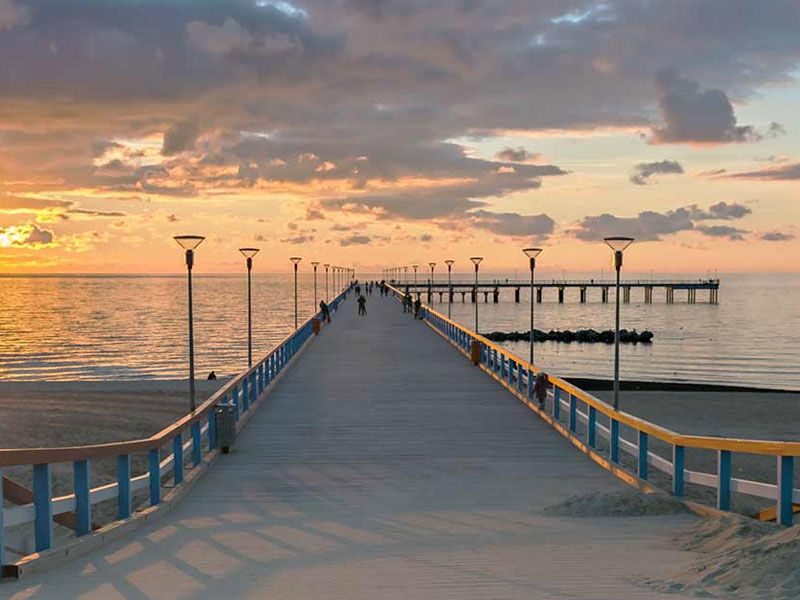There is a tonne of must-see and must-do sights in the first leg of the Baltic trifecta.
It’s hardly a surprise that Lithuania has so many intriguing locations for the aspiring traveller given the country’s historic alliances with Poland to the west, conflicts with Russia, Sweden, and the Teutonic Knights, and shaping by Slavic builders and Orthodox faiths, to name just a few of the influences.
Vilnius
A genuine treasure trove of mediaeval marvels and gorgeous Gothic and Russo-flavoured Baroque architecture can be found in the Grand Duchy’s historic capital.

In the Old Town, cobblestone streets wind around the stunning St. Anne’s Church’s buttresses, over café-dotted squares, and beneath the towering Gediminas Keep and Upper Castle fortress, all of which date back to the 13th century.
The self-proclaimed Republic of Uzupis, a land of shabby-chic, graffiti-strewn streets and more drinking establishments than you can shake a cepelinai potato dumpling at, beckons on the fringe of town while the new town’s blocks pulse with beer bars and sleepless rock clubs.
Kaunas
The second city of Kaunas, which protrudes over the confluence of the Nemunas and Neris rivers in the centre of central Lithuania, boldly claims its claim as the nation’s alternative centre and partying capital.

In the daytime, one can seek out the crumbling bulwarks of the red-brick Kaunas Castle and wander the enchanting cobblestone alleys of the Old Town, Kaunas’ prettiest neighbourhood and home to charming mediaeval merchant guilds and one gorgeous city hall. Thousands of students power the nightlife, which bubbles up on the tree-shaded boulevard of Laisves Aleja and between the countless craft bars and underground drinkers of the historic centre.
Kernave
UNESCO-attested The history and tradition of Kernave are more extensive than those of many other Lithuanian towns.

It is praised for being one of the first mediaeval capitals of the Grand Duchy, and it is believed that the city saw a golden age boom in the 13th and 14th centuries, until the Teutonic Order’s assault destroyed the defences and strongholds.
The archaeological reserves that line the bends of the Neris River today are home to mounds of artefacts that date back to the late Palaeolithic Period but are currently covered in soil. These remnants include bulwarks, burial sites, throne rooms, and more!
Memel
Memel, which was formerly one of the Baltic region’s main Teutonic strongholds, eventually developed into a bustling port and trading centre for the Duchy of Prussia and finally became the northernmost city in the German Empire in the late 19th century.

As a tourist destination and the gateway to the Curonian Spit, Lithuania’s most well-known coastal length, Klaipeda now is bursting at the seams with remnants of its 800-year-long past. That means visitors can explore the Old Town’s curious sculptures and cobbled squares, visit Lithuanian pubs to sample the country’s home-brewed beer, and explore the bulwarks of Klaipeda Castle all on the same day. This isn’t even taking into account the mediaeval docksides and the Prussian bastions that are dotted with cannons.
Neringa
Neringa is without a doubt one of the most sought-after vacation spots in the nation. It is a patchwork of lush pine forests and flat grasslands, undulating dunes, and sandy beaches that curves its way along the Baltic Coast where Lithuania arches towards its curious Russian exclave of Kaliningrad and its long-time Polish rival in European history.
Also read: 6 Best Places To Visit In Tanzania
The entire length of the Curonian Spit in Lithuania, including the sun-kissed resort strips of Nida and the earthy cottages that make up historic villages like Pervalka, provides excellent bicycling and hiking, windsurfing and fishing in the Curonian Lagoon.
Palanga
For Lithuanians all around the nation, Palanga has come to symbolise summertime debauchery. Nowadays, this city’s high-season electro and chart parties take place from June to August along the Jonas Basanavicius Boulevard and in the innumerable restaurants and outdoor cocktail lounges that flank its periphery.
The beach, which offers possibly Lithuania’s most accessible and sunbather-friendly stretch of golden Baltic sand, is another draw during the hotter months.

Yet life in Palanga isn’t just late evenings and leisurely afternoons.
Together with the intriguing Amber Museum and the close-by Curonian Spit nature reserves, there is also the charming Tiskeviciai Palace with its neo-Renaissance beauty to view.

























